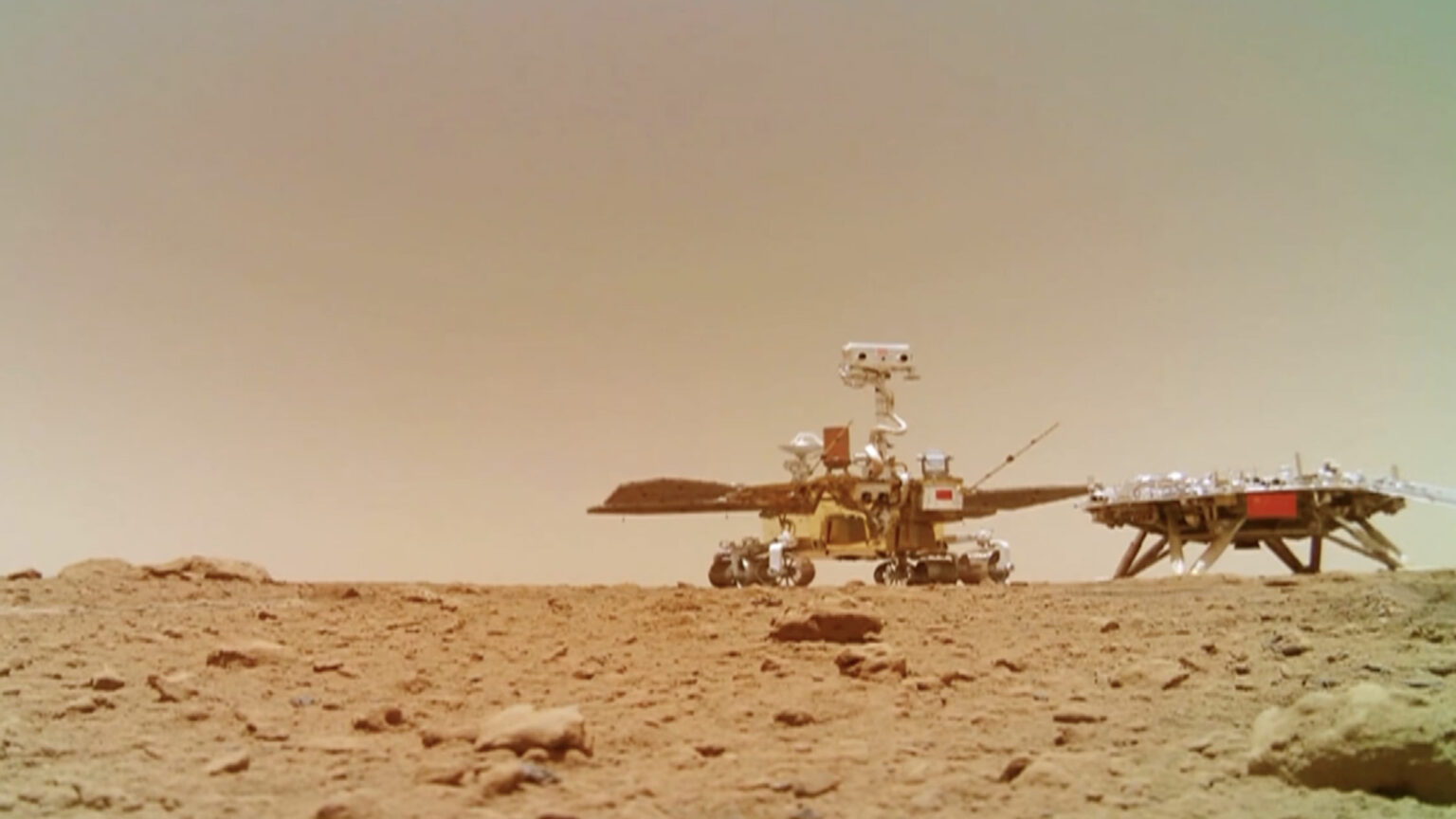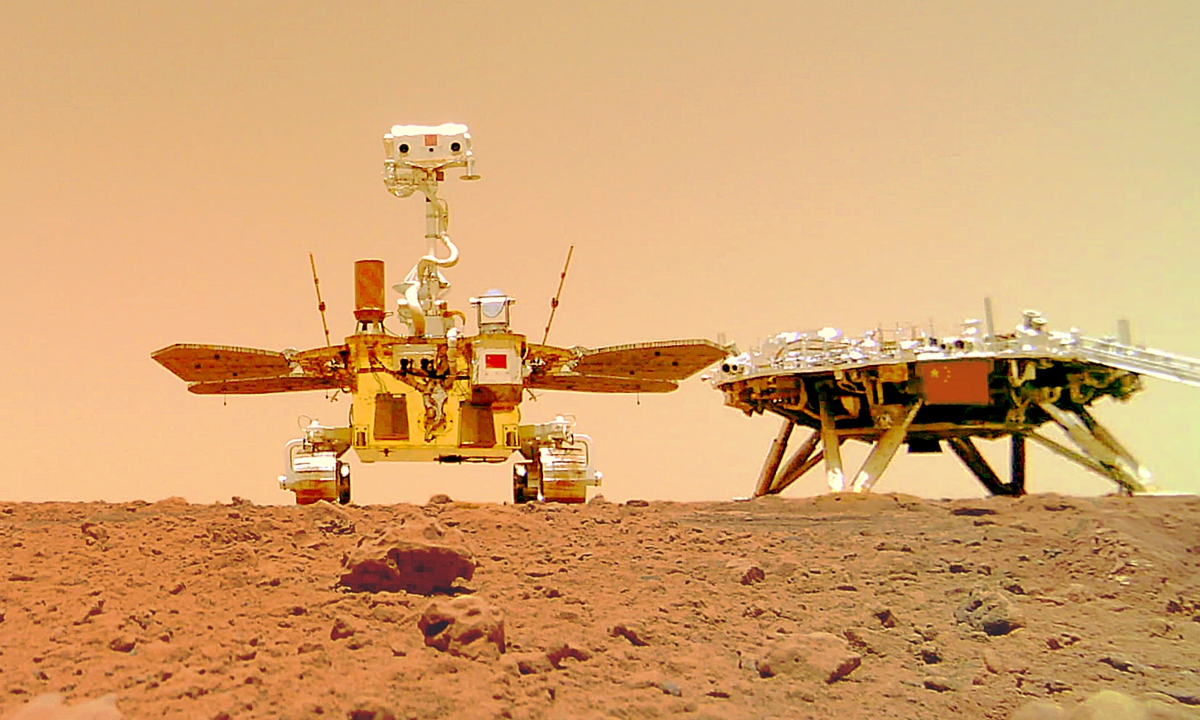There is more and more evidence that liquid water flowed on the surface of Mars much earlier than previously thought. Scientists have long believed that water on Mars appeared about 3 billion years ago, during the Hesperian period of the planet. But then the planet lost most of its water. A new study presents evidence of water activity just 700 million years ago, until the current Amazonian period, creating a new mystery about the Red Planet and its history.

The new study is based on data from the Chinese Zhurong rover. It is part of the Tianwen-1 mission and delivered to the surface of Mars in May 2021. Scientists used data collected by the rover for the first 92 Martian days at the site of its landing in the Utopia Planitia.
Yang Liu, a researcher at the National Space Science Center (NSSC) of the Chinese Academy of Sciences (CAS), and his colleagues analyzed data from three different instruments at Zhurong: a Laser-Induced Breakdown Spectroscopy (MarSCoDe), a telescopic microimage camera and a short-wave infrared spectrometer. These instruments studied minerals that suggest the presence of a significant amount of liquid water at this site about 700 million years ago – in the current Amazonian epoch, which scientists previously considered dry.

While the NASA mission was collecting samples in the form of salt minerals, the Chinese Zhurong discovered water molecules encased in rock, which is different from other environments with young liquid water that were observed earlier. This means that certain forms of water-containing minerals could have formed at much later periods of time than previously thought in scientific research.
Difference between Zhurong and NASA rovers
NASA has sent its rovers to ancient landing sites that date back to the Noah era, more than 3.7 billion years ago. Thus, Zhurong is not just an additional set of wheels on Mars, but a powerful set of tools exploring a new, geologically young place to open up new opportunities for Mars exploration.
“One of the main things we have to find out, and which I’m looking forward to from the Zhurong rover, is how extensive these ‘young’ aquifers are,” says Eva Scheller, a planetary scientist at the California Institute of Technology.
Currently, Zhurong has traveled about 2 km on the surface of Mars in more than 350 days and analyzed a number of features during its travels. This means that the rover will probably still be receiving new, more intriguing data.
Recall that an unusual type of rock on Mars pointed to the turbulent past of the planet.
The results are described in an article published in the journal Science Advances.
Follow us on Twitter to get the most interesting space news in time
https://twitter.com/ust_magazine
